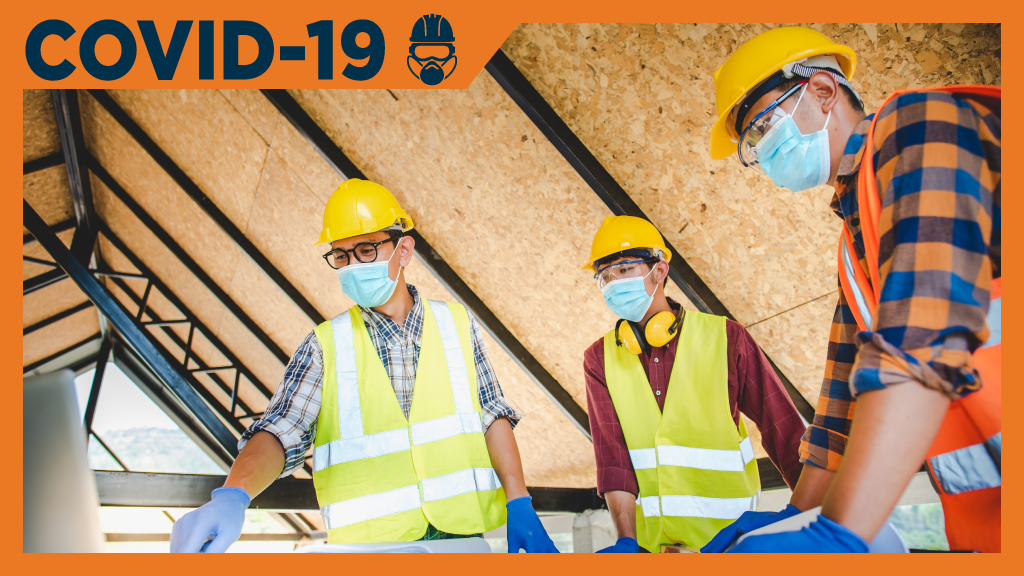When the COVID-19 pandemic hit British Columbia in mid-March 2020, the Provincial Health Office (PHO) recommended a variety of measures, such as face masks and physical distancing, to keep employees safe in the workplace.
Because B.C. construction and the associations that represent it followed the PHO’s directives closely, workers were kept out of harm’s way and the industry has been able to continue work without stopping.
At the same time, some contractors were unhappy about restrictions of movement on and around worksites.
The construction industry is learning that worksite health and safety during the COVID-19 pandemic is complex and multidimensional.
In addition to health and hygiene, there are important social and economic aspects that are sometimes overlooked but need to be recognized.
“Construction is unique,” said Mike McKenna, executive director of BC Construction Safety Alliance. “The industry is not behind four walls. Much of what it does is open to the public and people are always watching.
“Many construction sites are, in fact, completely open to the public. More than other industries, construction workers and managers need to be vigilant.”
Early in the pandemic, McKenna said, there were reports of COVID-19-related oversights on some worksites, such as not washing hands or maintaining physical distancing.
“Ignore the Provincial Health Office’s directives at your peril, or you will be shut down,” he said. “The cost of ignoring them is that you don’t work.”
Victoria Arrandale, assistant professor in the University of Toronto’s Dalla Lana School of Public Health, said a safe workplace during the pandemic requires more planning about where, when and by whom work is undertaken.
“We need to prevent the virus from getting into the workplace and, if it does enter, to keep it from spreading,” Arrandale said. “That can be difficult to do on a dynamic worksite where there is plenty of movement combined with work in close quarters, but it needs to be done.
“It’s a public health, as well as an occupational health, problem. Workers can take the disease home and transmit it to family and friends.”
A solution could involve adding more shifts or staggering work hours.
“But there needs to be a balance, because new safety strategies shouldn’t make existing workplace hazards worse,” Arrandale said. “We shouldn’t, for example, cause people to trip and fall in order to maintain physical distancing.”
Employers and workers need to ensure COVID-19 precautions are also kept in place during break times.
“This means lunchrooms and similar areas need to be set up to support physical distancing, because masks have to be taken off to eat and drink,” Arrandale said.
Christopher McLeod, head of the University of B.C.’s occupational and environmental health division, said there are solid business reasons for taking seriously the dangers posed by the virus.
“The potential risk to a company if something bad happens on the worksite is great,” said McLeod. “If you’re the owner, you won’t be able to handle the result. The steps you need to take to protect yourself aren’t onerous, so do it.”
Protecting your workers is also good marketing for your company.
“Your customers want to know you’re taking their safety seriously,” said McLeod.
There have been numerous studies that show large companies that are safer are also more profitable.
“I’m sure the same thing applies to small companies, too,” McLeod said.
Rebecca Hancock-Howard, assistant professor in the Institute of Health Policy, Management and Evaluation at the University of Toronto, said employers could, depending on the work environment, consider providing face masks for their employees, instead of asking them to bring their own.
“That way they know the masks are of the right quality to provide the protection the workers need,” said Hancock-Howard.
Good ventilation is needed too in order to prevent the possibility of transmission of the coronavirus.
“Keep windows and doors open and think of installing tower air filters,” she said. “They’re not too expensive.”
In the future, said Hancock-Howard, occupational health and safety regulations may need to be expanded to include new directives that prevent the spread of communicable diseases, such as COVID-19, on the worksite.
Lori Guiton. director of the policy, regulation and research division at WorkSafeBC, said it has policies in place to address communicable diseases for the purposes of compensation.
“There is also a regulatory structure in place to address communicable diseases,” Guiton said.
The process for changing B.C.’s occupational health and safety regulations, if changes are needed, is straightforward.
“Depending on the complexity and urgency of the issue, a regulatory project can take from nine months to several years,” Guiton said.











Recent Comments